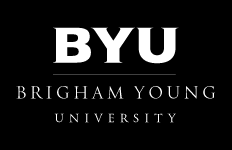THOMAS DOUGHTY
Born in Philadelphia in the last decade of the eighteenth century, Thomas Doughty was as a young man apprenticed to a leather merchant and eventually succeeded to his own profitable leather business. Therefore it must have astonished his friends when in 1820, at age twenty-seven, he abandoned his established trade in favor of painting -- an area in which he had no formal training. What at the time would have seemed even more audacious, he aspired to the virtually unheard of profession of "landscape artist." But Doughty obviously had both insight and foresight. With the acquisition of the Northwest Territory in 1787 and the Louisiana Purchase in 1803, the geographic limits of the United States had been expanded enormously. People were awed and intrigued by the vast territorial holdings of the still young nation. Meanwhile poets and essayists like William Cullen Bryant and Ralph Waldo Emerson were extolling the God-given blessing of the American land.
Doughty was one of the first Americans, along with Alvan Fisher, Thomas Birch, and Washington Allston, to specialize in scenery painting. He began his career by recording topographical views of gentlemen's estates -- not landscapes in the strictest sense, but in effect, "portraits" of specific lands ordered in much the same spirit as the respective owners had commissioned portraits of themselves. Doughty's early works therefore occupy a curious transitional position between conventional portrait and pure landscape. He received his first public recognition in 1822 when eight of his landscapes were shown at the Pennsylvania Academy of the Fine Arts. Two years later he was elected to membership in that institution, an occasion marked by the exhibition of eight additional paintings. (Upon seeing these works the young Thomas Cole was reported to have felt profoundly moved and humbled.) In 1826 Doughty submitted to the first exhibition of the National Academy of Design. The New York Mirror, reviewing the show in its June 10th issue, acclaimed two Doughty canvases "the most beautiful in the room."
Except for a brief period of 1826 when he was teaching in Boston, Doughty lived in Philadelphia until 1837. He toured Europe in 1837 and '38. Upon his return to the United States he settled in New York City where, but for his periodic travel, he spent the remainder of his life. Increasingly his work grew in popularity, evidenced by the fact that the American Art Union alone purchased more than fifty of his paintings for distribution through its periodic members' lottery.
Many of Doughty's paintings seem repetitive and uninspired. Yet at his best he produced charming and poetic pastoral images. Rather than the grand panoramas that typify the work of several of his successors in The Hudson River School, Doughty's paintings are intimate and approachable. As in the case of Near Little Point, his composition often centers on a tranquil body of water surrounded by trees in the foreground and gently rolling hills in the distance. His light and color is nearly always subdued. One or two human figures may be included, rarely more; and in terms of the total picture area they are typically small in scale. Like the youthful fishermen in the Hunter Museum's painting, the characters in some way "commune" with their rustic surroundings. The ideal of harmony between humankind and nature is a major theme in Doughty's art.
-- William Henning, Jr.
http://huntermuseum.org/thomasdoughty.htm



